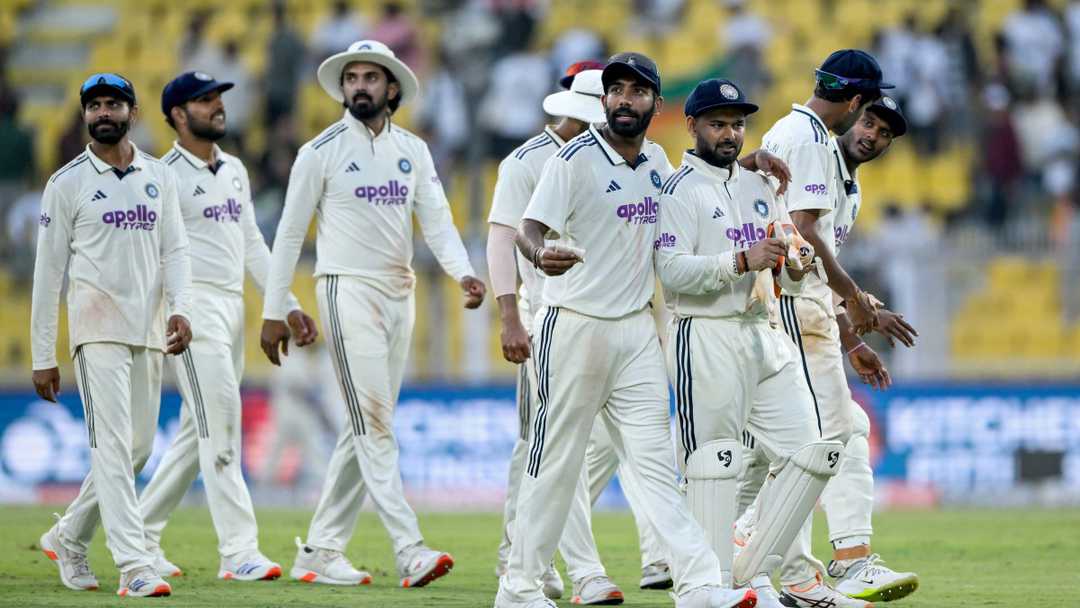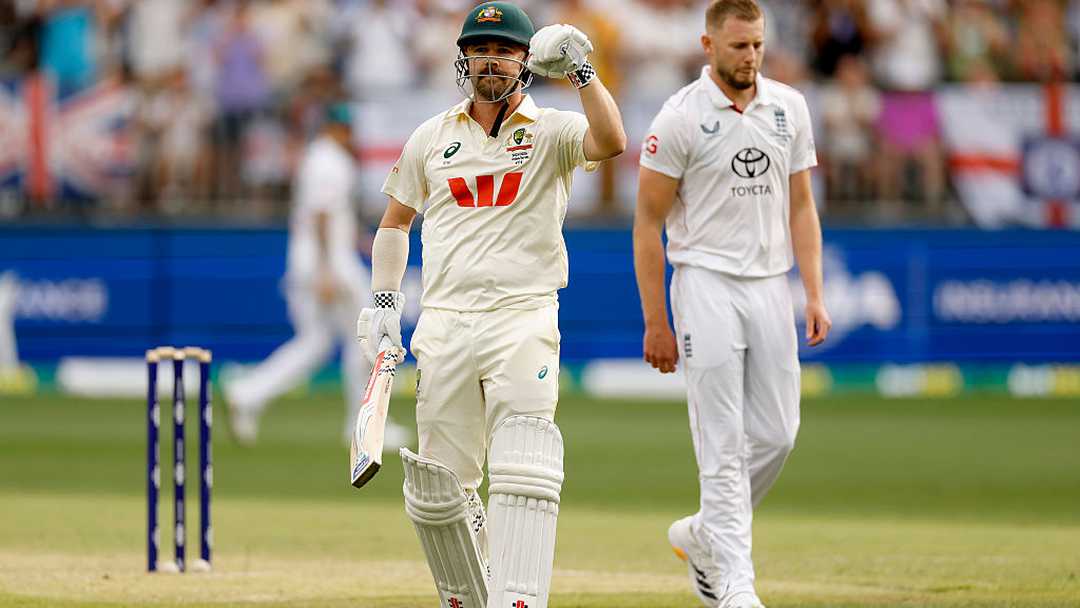
A refresher of a 'good wicket'
Tristan Stubbs took a moment to himself, staring at the ground while India celebrated around him. It was around 37 minutes into the final session of Day 1 in Guwahati when Kuldeep Yadav lured Stubbs into following the drift on the ball and edging it to first slip. It was the first ball of his spell, and pushed a batter who'd played 111 deliveries before this into a bad habit. Players often talk about a 'good wicket' without spelling out the finer details, but what Guwahati rolled out on its first day of Test cricket came close to what that should mean in this part of the world.
You could also get a fair understanding of the pitch from Stubbs's lens. Wired to naturally be more attacking, he scored 19 from nine deliveries of spin he went after—stepping out often and yet not having a single false shot. When he rotated strike against spin, he managed to get eight runs off 25 balls, with 12% false shots. But the real kicker came from defending against spin. He scored 0 from 29 of those, and then fell on the 30th, with a false shot % of 16.6.
It was that kind of a pitch. No demons to shock you into an error, but also not flat enough for you to lock in AND score runs with ease. "You can bat time, but you look up and the scoreboard's sort of gone nowhere," Stubbs offered as his assessment.
This was a pitch none of the players truly knew and it was a day of learning on the go. But the batters, at least, could take comfort in one thing—it wasn't going to make them doubt their defence the way Eden Gardens did. The day began with two equally strong arm-wrestlers pushing hard for an advantage from a position of stalemate.
Jasprit Bumrah and Mohammed Siraj found early value in sticking to straight lines, but the batters could largely trust the bounce on offer, even if it was enhanced because of the characteristics of the red-soil pitch. This comfort and the absence of any dramatic turn meant the game for the Indian spinners was in the air. Washington Sundar, brought in after the drinks break in the morning, bowled a seven-over spell that served as a test of the left-handed Ryan Rickelton's footwork and convictions. Washington beat Markram in the air too, as first-time leader Rishabh Pant played around with his field placements.
Kuldeep Yadav did the bulk of the damage, picking up three wickets.
Rickelton and Markram survived the first hour which Indian pacers were expected to maximise early on a pitch that had a tinge of green. The pair extended that to the entire session and approached the Tea break as rightful drawers of first blood. But just then came a snag. Pant threw the ball to Bumrah for the final over and he broke through Markram's defence. This then became the recurring theme of the day.
Batters walked in, looked a million dollars, batted time and were still undone on either side of a break. You could credit India for not letting their intensity fluctuate, which also spoke volumes of the pitch—there was always reward for the trier. Like when Kuldeep used his drift exceptionally in the first over after the 20-minute session break and got Rickelton to edge a drive. Until that delivery, the opener had batted 81 balls.
Kuldeep bowled three magical overs in that spell, where line, lengths and speeds were jumbled up to unsettle the usually measured Temba Bavuma. He even beat the South African captain in the air, but it didn't go further than that. There were moments all through the day that gave you an idea of how different this pitch was to what the two teams played on last week. There, Wiaan Mulder had resorted to a reverse-sweep in the 13th over as a defence mechanism. On Saturday, the first sweep of the South African innings came only in the 45th.
There was no one passage of play that carried the threat of derailing the teams. By the time they went in for Lunch, Bavuma had batted 90 deliveries and Stubbs 91. It was a partnership that pushed India to remain steadfast in their relentlessness and they obliged. Siraj even tried to bluff Stubbs, by pushing a second fielder to deep square leg and creating the illusion of an incoming short ball and sneaked in a fuller length delivery. It had worked perfectly against Zak Crawley in the second innings of the Oval Test, but not here. But when South Africa came back after the break, Bavuma gave in to the urge of trying to clear wide mid-off, and perished.
Each of Markram, Rickelton, Bavuma and Stubbs went past 35 and yet none got to a half-century—a first-time occurrence in the history of Test cricket, and another big indicator of the kind of pitch beneath them. India put six in the wickets column by the end of the day, but South Africa took 247 runs for it. For the 81 overs played on the opening day, there were no early signs of it crumbling either. The characteristic will shift as this game goes on—that's only natural in any part of the world, but as things stand, the two arm-wrestlers are back to status quo, still quivering in the middle in the hunt for the slightest of advantages.



